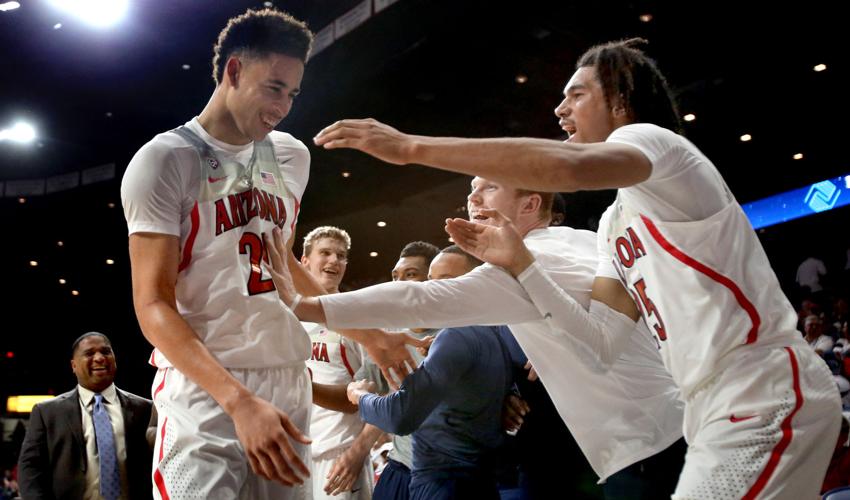In the ever-fluid world of college basketball roster management, Arizona coach Sean Miller has endless challenges.
Somebody might become unhappy and transfer out. An upward-minded transfer somewhere else might want in. Somebody could leave for the pros early ... or consider doing so and later return.
Miller has said he often has a feel for how these things are developing, allowing him to anticipate and react quickly.
Except one time this spring: When Chance Comanche told him he was leaving for professional basketball.
“I was surprised that Chance went,” Miller said last month.
So were a lot of other people. Comanche, after all, was the eighth or ninth man in UA’s rotation last season, averaging 6.3 points and 3.6 rebounds, an improving big man who was still in need of development. He played behind Kaleb Tarczewski as a freshman in 2015-16 and behind Dusan Ristic as a sophomore last season.
But at 6-foot-11 and about 215 pounds, Comanche always had pro potential in his game because of his size and mobility.
And since Ristic opted to return next season, with mega-recruit DeAndre Ayton coming in, Comanche wasn’t likely to crack the Wildcats’ starting lineup as a junior, either.
So he left.
It isn’t clear if playing time factored into why Comanche left, since efforts to reach Comanche and his agent have been unsuccessful. But Miller said Comanche made a family decision and was not critical of it.
“That’s Chance’s decision,” Miller said. “I’m not sitting here every day hoping that things don’t go well. I want him to do well.”
So far, according to his mother, Melissa McGee, Comanche has made progress this spring. He’s worked out for seven teams — the Knicks, Jazz, Thunder, Grizzlies, Raptors, Lakers and Rockets — and also did an interview-only with the Clippers because he suffered a sprained ankle during his workout with the Lakers.
McGee said Comanche has also been doing well in agility testing and that he’s had a chance to demonstrate outside shooting.
“One of the biggest pieces of feedback we have been receiving from his workouts is his ability to not only shoot the college 3 but also the NBA 3, which is something they had no idea he could do,” she said via text message.
The Jazz was among the teams testing his shooting ability during a workout earlier this month.
“He did some things that we weren’t able to see at Arizona,” said Walt Perrin, Utah’s VP of player personnel, according to a video the Jazz posted. “Sean kind of kept him closer to the basket. So he was in our workout to get outside to the NBA 3-point line and show us he could shoot that.
“He’s still a bit on the light side ... He’s gotta get a lot stronger. Intriguing, but I think he’s a ways away.”
While Comanche isn’t projected to be drafted next week —he is rated the No. 88 prospect in the draft pool by Draft Express — that intrigue about him could make him a prospect for one of the new two-way contracts between the NBA and D-League intended for players with three years or less of experience.
“He can be a two-way guy, why not?” Draft Express president Jonathan Givony said. “He definitely has upside.”
A two-way deal would mean Comanche goes to camp with an NBA team and spends most or all of next season in the D-League, earning between $76,000 and $279,000 depending on the number of days an NBA team calls him up.
So in a best case for Comanche, maybe it’s that versus another year of developing — and probably coming off the bench again — if he had returned to Arizona.
Sounds like he’ll take it.
“He’s willing to work and grind in the D-League under a two-way contract,” McGee said, “if that is what is presented to him.”





